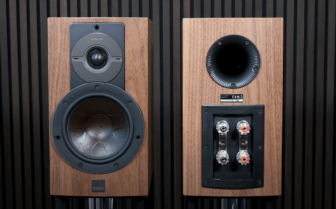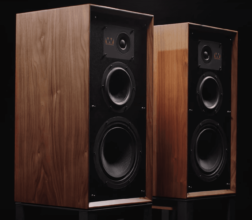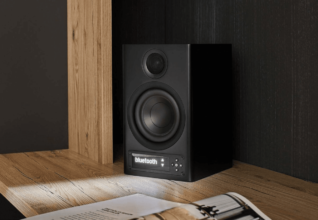Wilson Audio TuneTot Review
How do you get the sound of a Wilson Audio speaker into smaller rooms? With the TuneTot! The surprisingly compact two-way box may not deliver much bass, but it still offers highly detailed sound even when placed near a wall.

Wilson Audio and the author—love at second sight, you might say. Things really took off after testing the Sasha V, which costs $63,000. However, the impressive bass capabilities or sheer size of its soundstage weren’t the reasons. Instead, the author was fascinated by something else: the absence of cabinet influences, resulting in impressively detailed and natural sound reproduction, which could be described as almost unrivaled.
Until the mentioned test of the Sasha V, the American speakers appeared to the reporter as too large, expensive, and imposing. But the Sasha’s incredibly clean sound left a lasting impression, as did the question of how to bring the imposing Wilson sound into smaller rooms. The test of the TuneTot is a direct consequence of the Sasha V review.
The US speaker manufacturer from Provo, Utah, promotes the test candidate as a “problem-solving tool” for HiFi enthusiasts with space limitations. Accordingly, the mini-monitor is compact. The truncated pyramid shape of the Sasha V’s midrange-high frequency unit is much larger than the 14.6 cm midrange-bass driver-equipped entry-level speaker from the Americans. Despite its exemplary clean finish, you notice how solid the small two-way reflex speaker is when you unpack it: the little speaker weighs a hefty 13 kg each.
The TuneTot cabinet is asymmetrically designed and, as always with Wilson Audio, is not made of simple MDF or HDF but of synthetic stone—a not further specified mix of crushed granite, carbon, and cellulose. For the TuneTot, the US engineers used X and S cast marble materials, with a wall thickness of just under 1.5 cm each, creating an acoustically dead cabinet. X and S materials are similar, but the density of the S material is said to be optimized specifically for midrange reproduction.
On the back of the cabinet is a 7 mm thick aluminum plate, behind which is a parallel-connected double resistor. This is only connected to the 1-inch silk dome tweeter and serves as overload protection. Both the tweeter and the mid-bass driver come from Scan-Speak’s Revelator series. The high-end 6-ohm speaker also uses capacitors developed in-house by Wilson Audio, like the larger Sasha V.
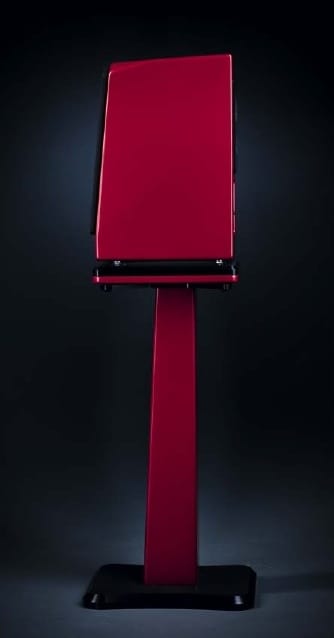
FIRM CONNECTION: The heavy metal stand of the TuneTot, which does not need to be filled with sand, connects to the two-way speaker via hex screws, creating a strong mechanical unit.
If you prefer not to place the TuneTot on the massive stands, Wilson Audio also offers a high-quality base for tables or sideboards called IsoBase. Its tilt angle is adjustable, and it costs $4,700 for a pair.
In the Studio with Glenn Gould
The bass foundation of the Sasha V is nowhere near matched by the TuneTot. How could it be, with a cutoff frequency of 65 Hz (-6 dB) and a fraction of the cabinet volume? But everything above that was at a world-class level, even if it seemed one or two classes smaller.
Smaller, but not small: Glenn Gould’s legendary second recording of Bach’s Goldberg Variations (Sony) brought the Canadian eccentric’s Steinway piano into our listening room almost life-sized via the TuneTot, making Gould’s final recording sound less like an early digital recording from 1981 and simply wonderfully transparent and multi-layered.

The Wilson accurately conveyed the finest nuances, delicate overtones, and even the slightest phase shifts or background noises (like Gould’s humming), all with electrostatic-like transparency. Add to that exceptional depth staging and stereo imaging, along with surprisingly dynamic capabilities for the speaker’s size—provided you don’t push its limits with volume or bass.
The TuneTot’s bass didn’t sound overly deep, but it gave the impression of more bass without sounding bloated. The speaker even performed well when placed directly against a wall: While the tonal balance became a bit less homogeneous and flatter, the bass gained impact. Bass lines always remained structured and didn’t get muddy, as often happens with speakers placed close to walls.
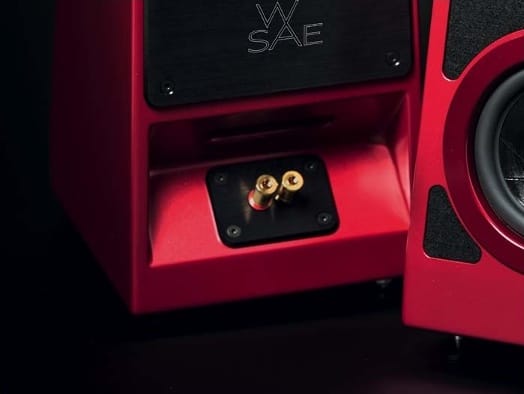
Various Color Options
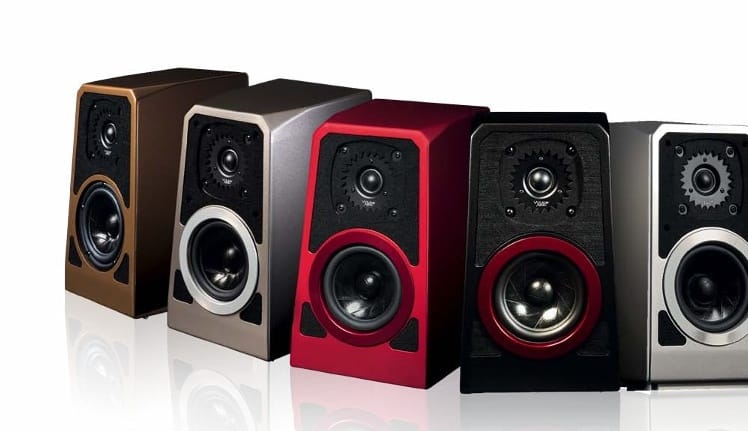
Wilson’s TuneTot is available not only in standard colors “Quartz,” “Galaxy Grey,” and “GT Silver.” The Americans also offer paid upgrades such as “Ivory,” “Carmine Red Satin,” and “Diamond Black.” But that’s not all: The metallic trim rings around the mid-bass driver (priced at $1,300 per pair) can also be swapped. They come in red, black, and other colors. Overall, the finishes are very classy, though the felt on the front looks a bit rustic.
The Wilson Audio Setup Procedure (WASP)
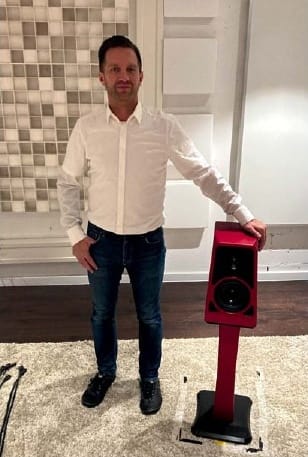
For WASP, ideally, you need two people. One sits at the listening position while the other walks around the room, speaking at a constant volume. The “actor” starts at the back wall and moves towards the listener while speaking. As the actor approaches the listening position, the voice “frees” itself, as it is no longer overwhelmed by low-frequency energy from the back wall.
In other words, pay attention to the point in the room where the back wall stops amplifying the bass! Once you find this spot, mark it with tape. As the actor moves closer, you’ll notice another change: the voice will become less focused as it first interacts with the opposite wall. Mark this point as well. You now have the front and rear boundaries of the neutrality zone! Repeat this process for the side walls. That’s it!

Measured Performance

Frequency response with a notable peak at 100 Hz (+7 dB) and early bass roll-off (-3/-6 dB: 71/77 Hz). Overall balanced response, with certain fluctuations depending on the listening position. Distortion behavior: clean sound up to 95 dB SPL, with bass and lower mids distorting beyond that.
Time behavior: out-of-phase step response from the tweeter, but fairly quick decay. Largely linear impedance response, meaning the frequency response changes little with tube amps with high internal resistance. Maximum bass level is reached at just 22 W/8 Ω due to the low sensitivity of 79 dB, requiring a calculated power of 69 W for 100 dB SPL.
AUDIO score 7.6/10
Tech Specs
- Brand/Model: Wilson Audio TuneTot
- Distributor: Audio Reference
Website: https://www.audioreference.co.uk/ - List Price: $15,800
- Warranty: 5 years
- Dimensions (W x H x D): 21.9 x 37.7 x 25.9 cm
- Weight: 13 kg
- Finish/Foil/Lacquer: No/No/Yes
- Colors: Diverse, including special lacquers
- Principle: 2-way bass reflex
- Room Adaptation: No
- Special Features: The vent can be sealed.
Verdict:
The TuneTot is an outstanding mini-monitor that requires good amplification and pairs well with a subwoofer. It convincingly delivers Wilson’s ultra-detailed sound, even in tight spaces. However, the prices for this “problem solver” and its accessories are quite high. Noblesse oblige.
Test Results:
- Neutrality: 3.2/10
- Resolution: 3.8/10
- Imaging: 3.8/10
- Dynamics: 3.0/10
- Bass: 2.2/10
Overall Sound Quality (Max. 10): 9.9/10
Lab Analysis (Max. 5): 3.4/5
Product Quality (Max. 5): 4.5/5
Audio Benchmark:
- Overall Rating: 7.95/10
- Price/Performance: Good
Wilson Audio TuneTot Unboxing & First impression
We are official dealers of Wilson Audio in Canada. This is the first demo pair that we unboxed and decided to share. We are ...
ACCUPHASE & WILSON AUDIO TuneTot speakers
The exquisite Wilson TUNE TOT Loudspeakers are driven by Accuphase A-75 Class A Power Amplifier and Accuphase C-3850 ...




